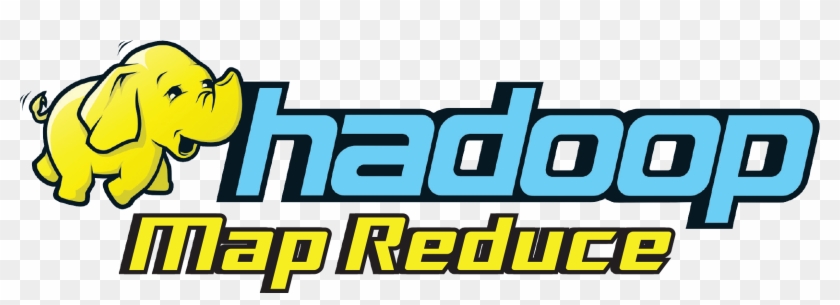Big Data Platforms, Hadoop and beyond
Guillaume Eynard-Bontemps, CNES (Centre National d’Etudes Spatiales - French Space Agency)
2025
Hadoop
Introduction
What is Hadoop?
Open source framework supported by Apache foundation:
- Store and process massive amount of data
- In a distributed way
- On “commodity” hardware (i.e. not expensive)
- Fault tolerant
A complex ecosystem
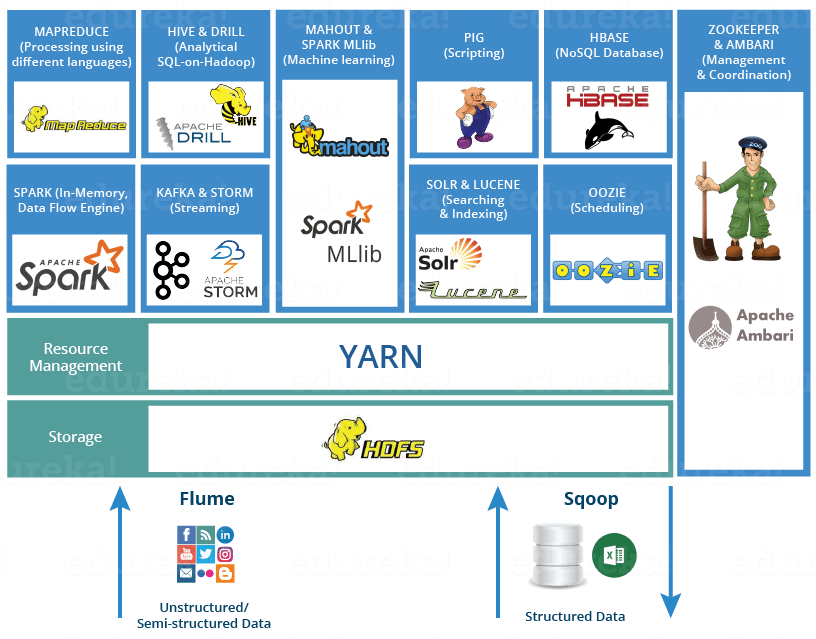
Numerous Apache Software Foundation projects:
- Each covering a specific functionnality
- With their own developer community
- And their own development cycle
Hadoop distributions!
- Cloudera/Horthonworks (2018 fusion)
- MapR
- Others smaller
HDFS and MapReduce principles
Two main components of Hadoop
- Distributed Software Defined Storage: HDFS (Hadoop Distributed File
System)
![]()
- Distributed Data Processing: MapReduce
![]()
Principles
- Split and store data on a cluster of servers (with local storage)
- Process data localy (on the server which owns it)
- Horizontal scalability: add or remove machines, on the fly, for compute or storage
- Fault tolerant
Hadoop cluster components
- CLuster of “commodity” servers
- Shared Nothing architecture: only shared component is standard network
- Each machine is a node which own both storage and compute
Each cluster is composed of:
- Master nodes: handle metadata and knowledge of the whole infrastructure
- Worker nodes:
- Host distributed pieces of data
- Execute data processing algorithm parts
Hadoop story, from google to Spark
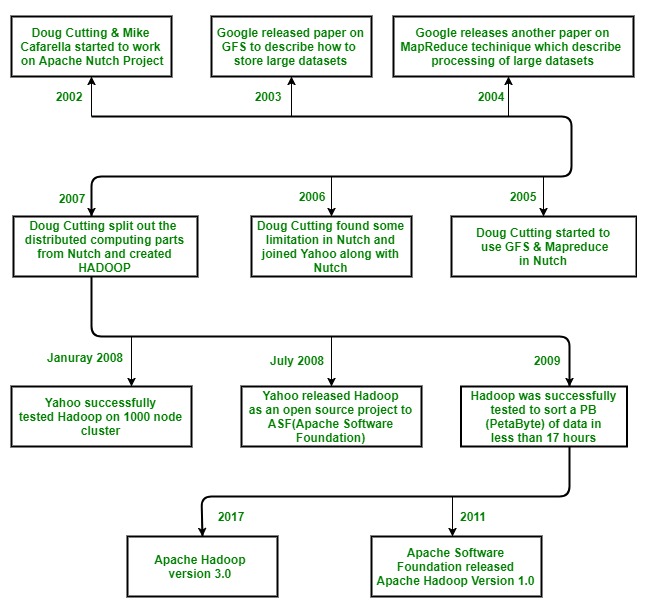
Spark first version in 2014.
Quizz
What are the two building blocks of Hadoop ecosystem (multiple choices)?
- Answer A: Oozie
- Answer B: HDFS
- Answer C: Map Reduce
- Answer D: Servers
Answer link Key: uw
Map Reduce exercise
HDFS
HDFS Basics
Distributed File System
- Written in Java
- Allowing to store massive amounts of data,
- structured or not,
- on a cluster of machines
- Extensible and portable
- One of the first Software Defined Storage
- (OK, Google was here first)
- In HDFS, data are of writen-once type (no inline modifications)
Data blocks
- Data is splitted and distributed
- among the Hadoop cluster
- Splitted into 128MB (default) blocks
- With a replication factor for preventing data loss
- (3 replicas default)
- Hadoop 3: Erasure coding
- similar or better durability as replication 3,
- but only 50% volume increase (can be less or more)
- instead of 200%
HDFS blocks repartition
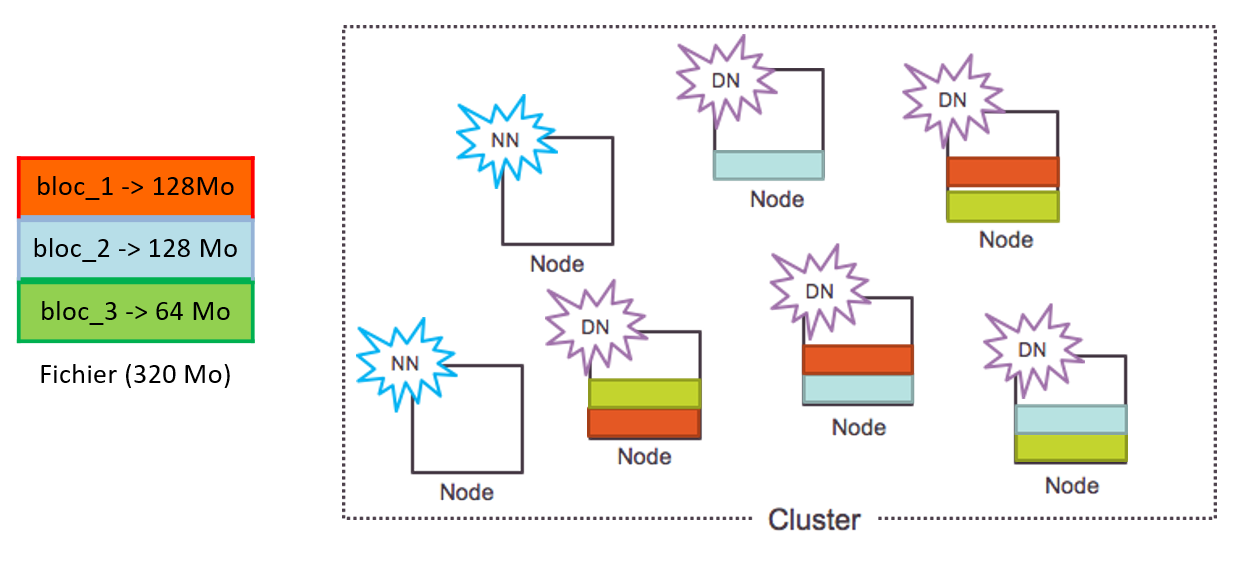
HDFS Daemons
Namenode
- Accountable for data locality and file system global namespace
- Daemon on a dedicated server
- Hosts metadata, create, remove, move files and folders
- Knows nodes wich own the parts of a file
- Needs to be replicated and secured (loss of metadata = loss of all data)
Datanode
- Stores and loads data blocks
- Daemon on every worker nodes
- Reading and writing of data
- Creation and Deletion of blocks
HDFS Architecture
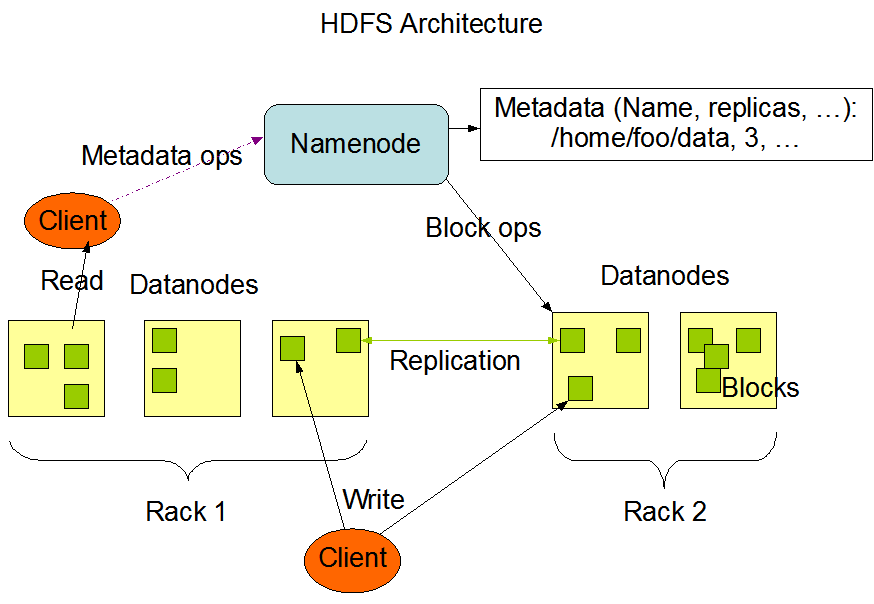
Quizz
What means HDFS?
- Answer A: Hadoop Distributed Functional Services
- Answer B: Hadoop Delayed File System
- Answer C: Hadoop Distributed File System
- Answer D: Hadoop Delayed Functional Services
Answer link Key: vn
Map Reduce
Map Reduce Basics
- Functional language concept
- Heavily used by Google for WWW indexing
- Colocate data and processing (with Hadoop and alikes)
- Automatic process distribution on pieces of data (eager distribution)
- Optimized for fast processing of huge datasets
- Fault tolerant:
- Data is replicated,
- Individual tasks can be restarted anywhere
Wordcount (1. storage)
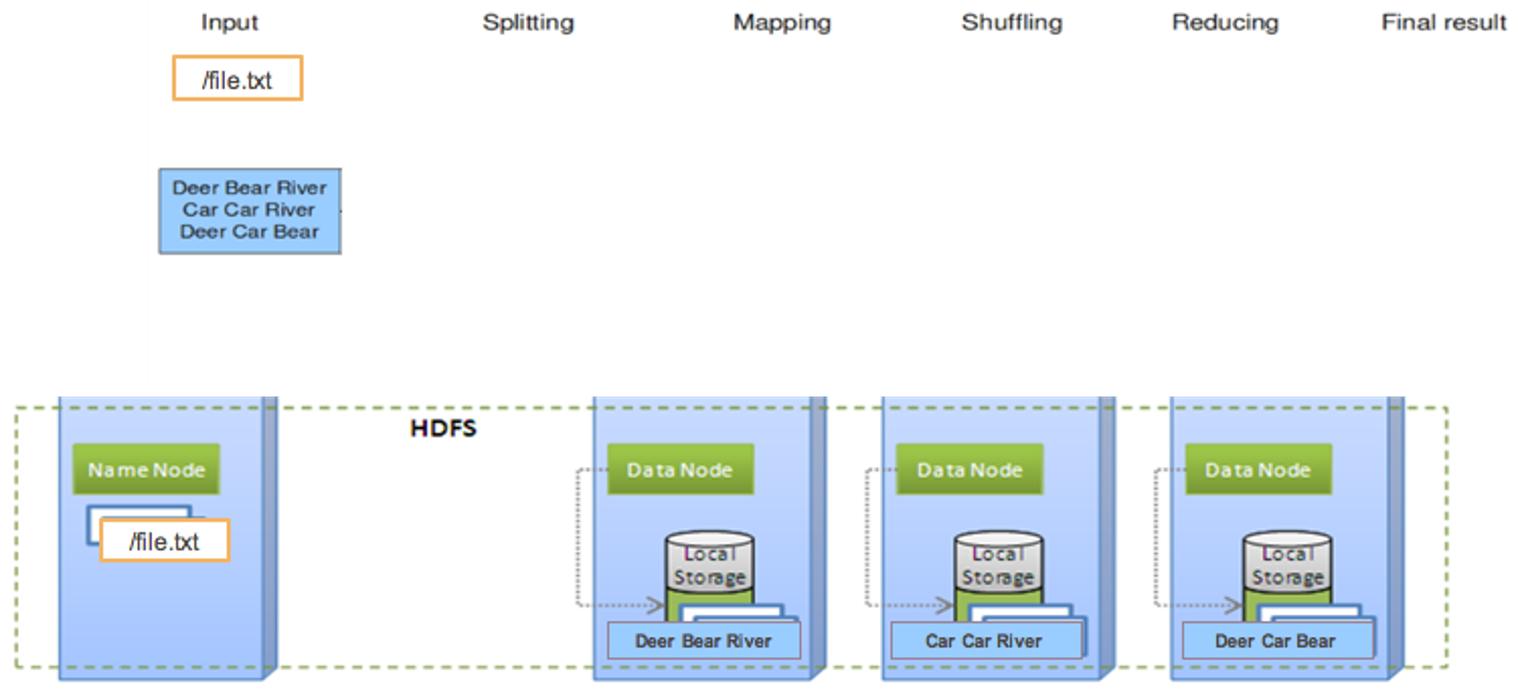
Wordcount (2. split)
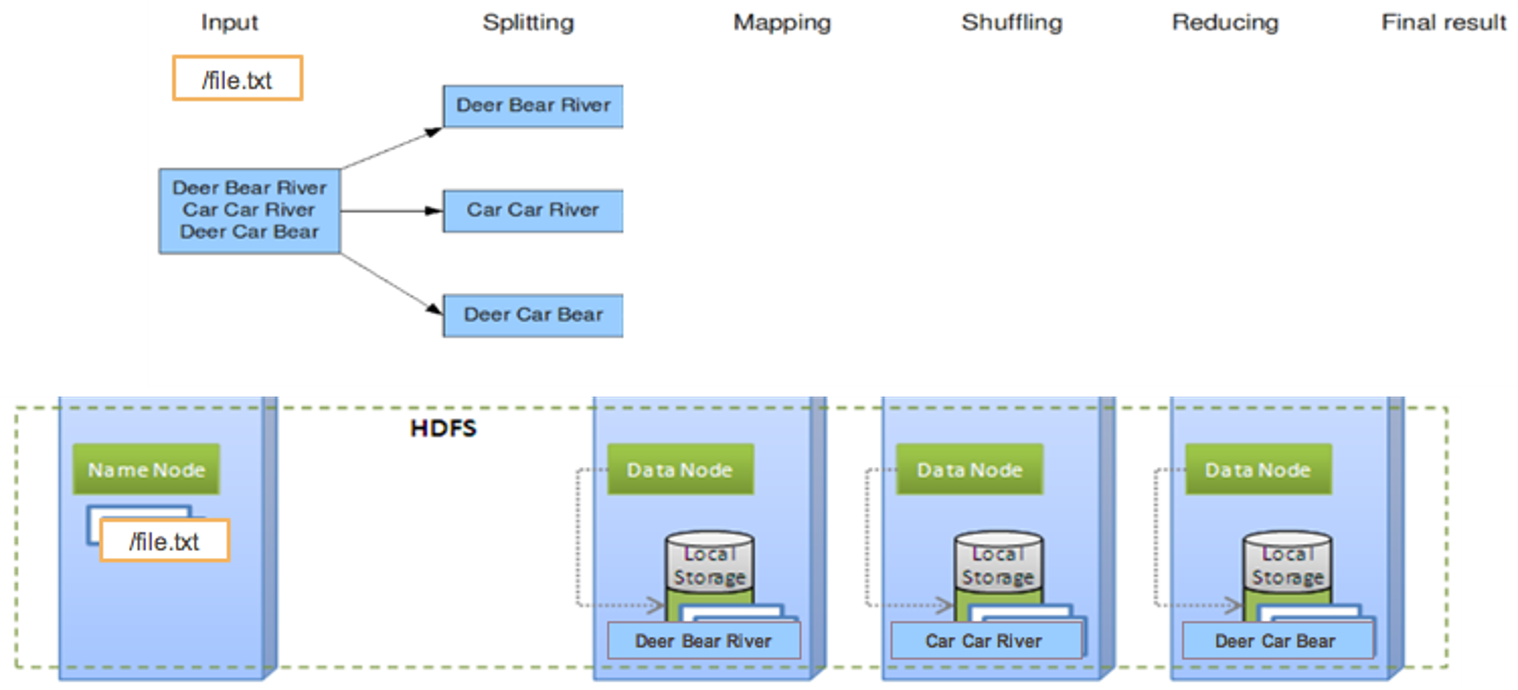
Wordcount (3. map)
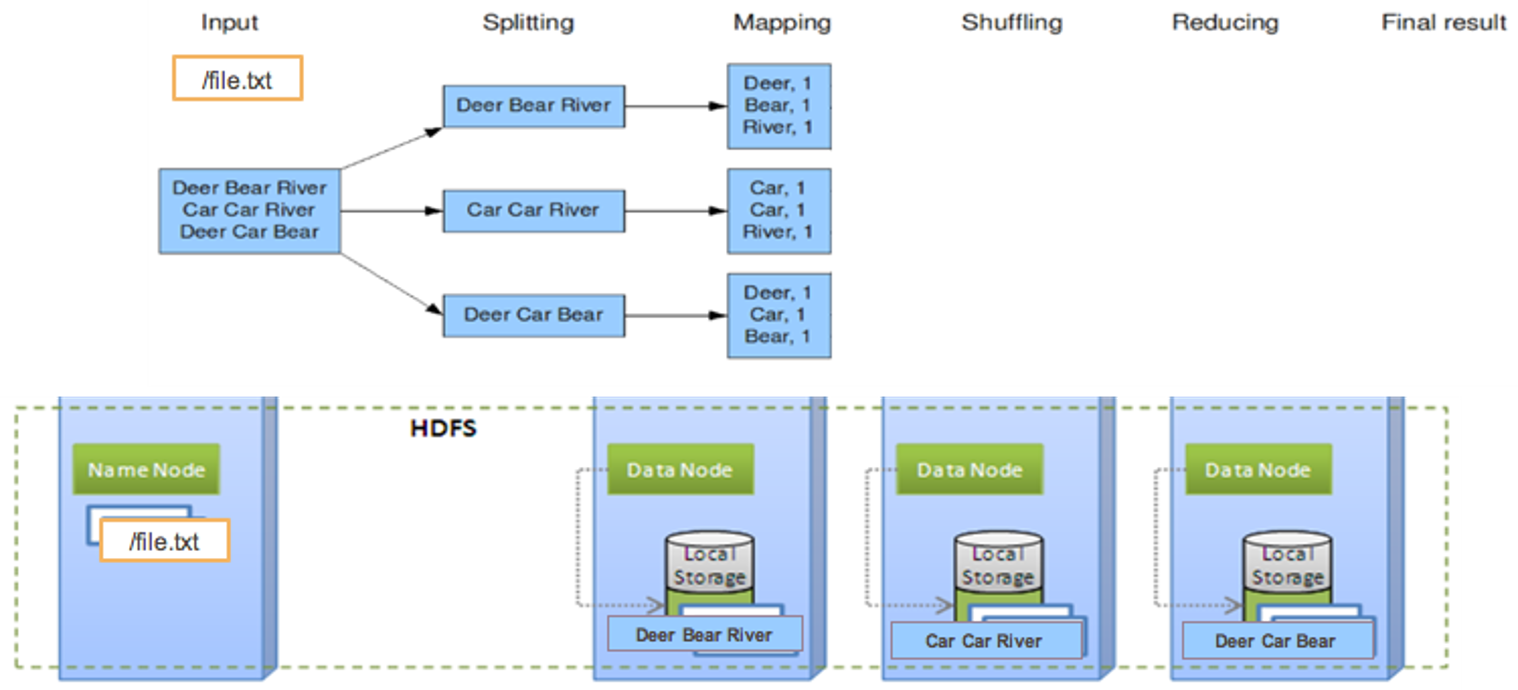
Wordcount (4. shuffle)

Wordcount (5. reduce)

Wordcount (6. result)
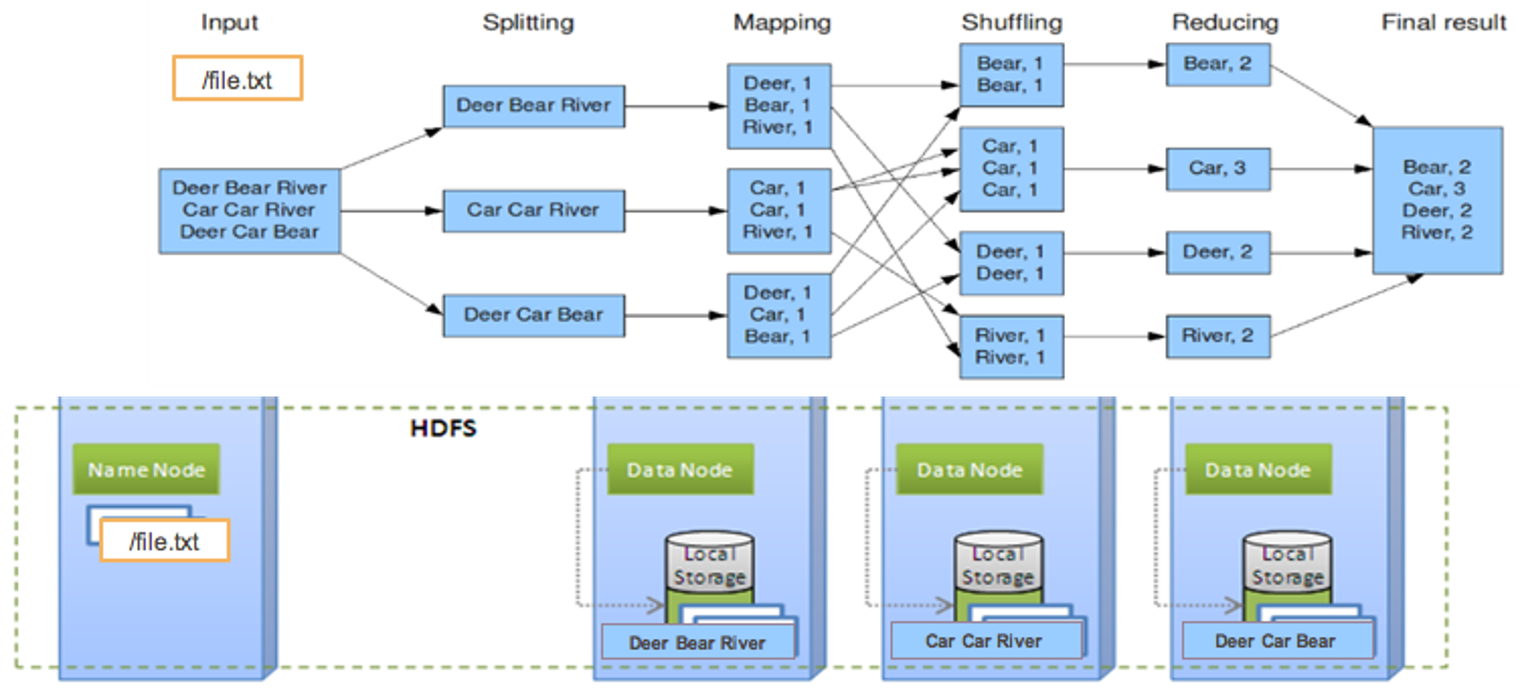
YaRN
- Yet Another Resource Negociator…
- Introduced in Hadoop v2
- Separation between
- Resources scheduling and cluster state
- Job execution and distribution
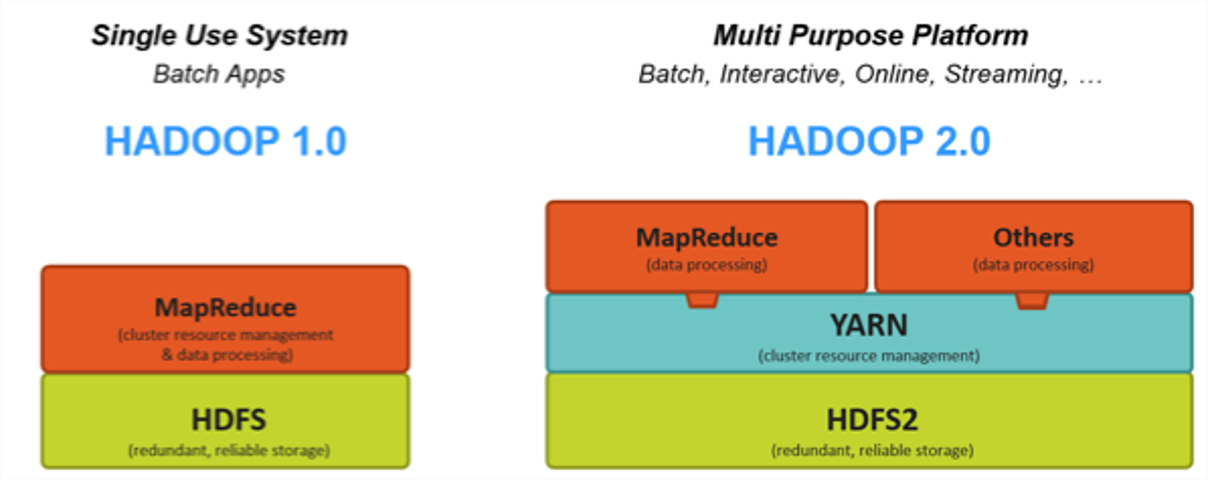
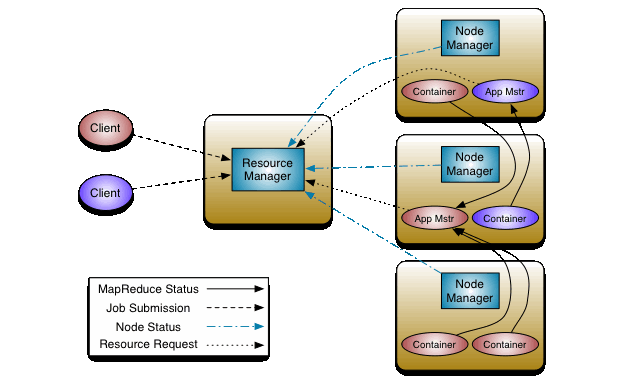
Quizz
What is the magical hidden step of distributed Map Reduce?
- Answer A: Map
- Answer B: Reduce
- Answer C: Shuffle
- Answer D: Split
Answer link Key: nm
Datalakes
Toward a new data management model
Process centric
- Structured Data
- Internal sources
- Important data only
- Multiple copies
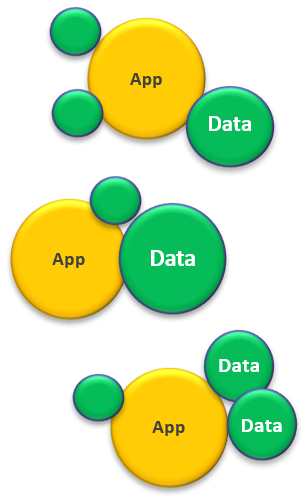
Data centric
- Multiple types (structured, semi-structured, unstructured)
- Multiple sources (internal, external)
- Everything
- One copy
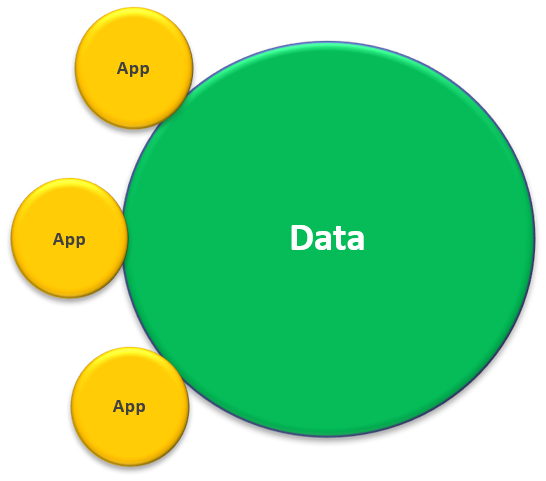
Host and process different kind of data
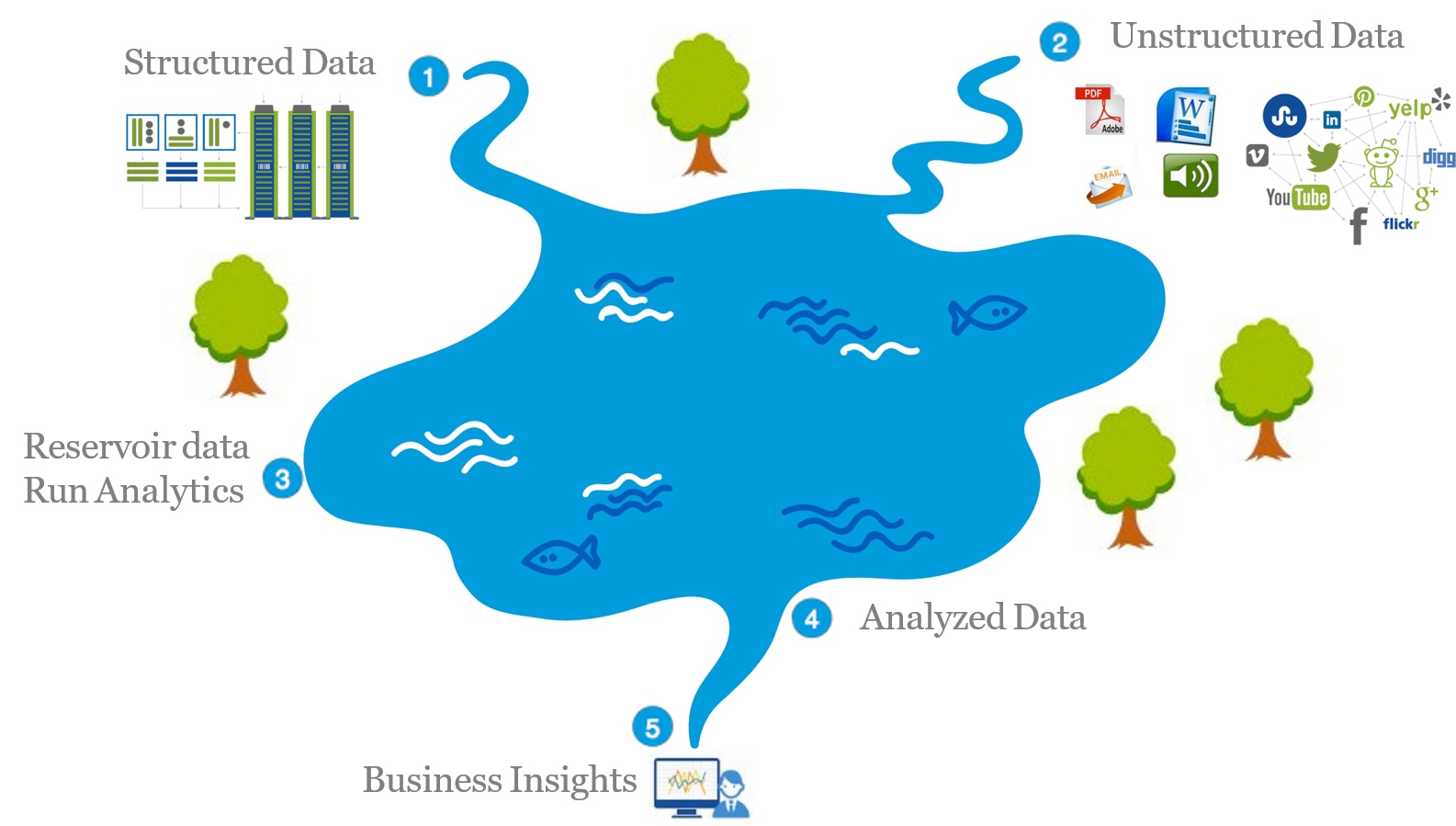
Typical Architecture
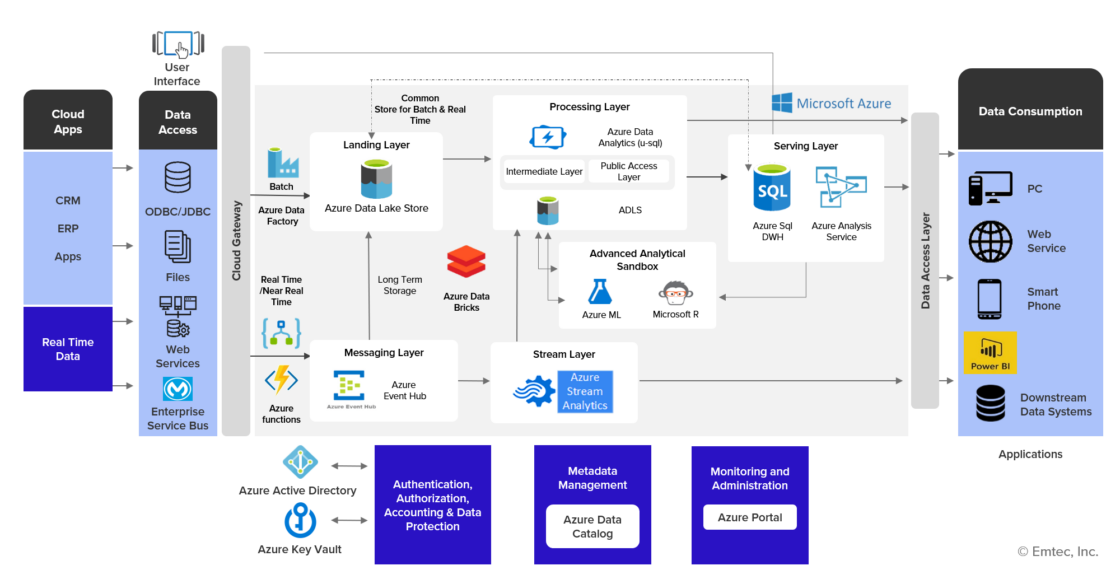
CNES Datalake infrastructure example
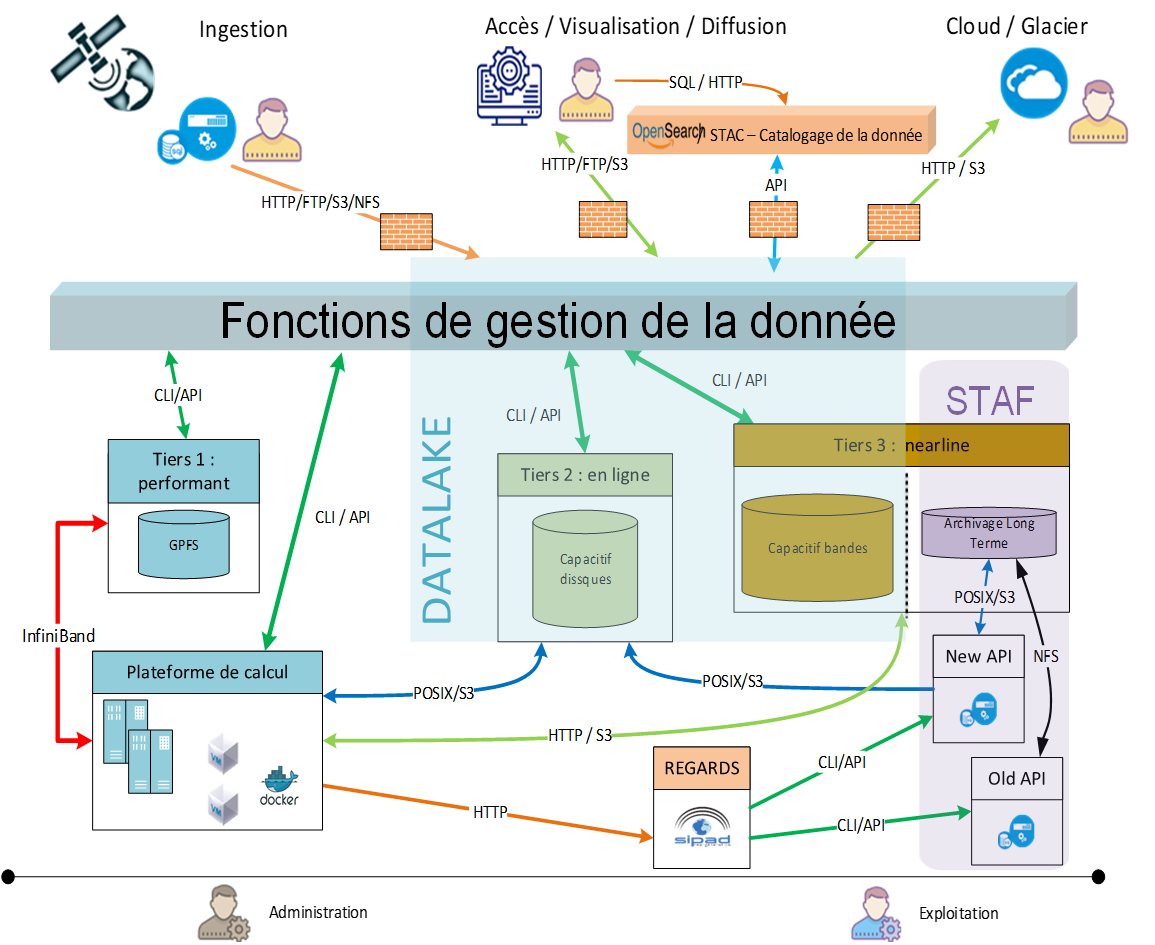
Quizz
What is the goal of a Datalake?
- Answer A: Host structured and filtered Data
- Answer B: Host any kind of Data, at any stages of processing
- Answer C: Standardizing Data structure
Answer link Key: gj
Data pipelines and associated tools
Data manipulation is complex
You won’t usually achieve what you want with a single MapReduce or Spark job.
Let’s say you want to train a ML model every time a text file is updated on a website and evaluate it next.
You’ll need to:
- Periodically poll the website for new data
- Launch your model training when new text file is availaible
- Evaluate your new model on a reference dataset
- Push the evaluation result somewhere you can see it
Processing pipelines
This is called a Pipeline or a workflow.
It mainly means chaining tasks or jobs together to automatically produce a result from an input.
Tasks are typically either:
- Triggered based on a date, periodicity (like Linux crontab for those who knows).
- Triggered by an external event: data availability.
- Triggered by the end of the previous task or tasks.
It is usually represented by Direct Acyclic Graphs (DAGs).
Example in Satellite ground segment

Some tools

Plenty others from Apache or in Python ecosystem.
HPC Platforms
Overview and Use cases
HPC = High Performance Computing
- HPC were built to solve compute bound problems
- Some early fields of research:
- Weather forecasting
- Atmospheric and climate research
- Rockets and Aeronautics design
- Computational Fluid Dynamics in general
- High performance infrastructure: compute, CPU, storage, Network
Current speed in eNATL60 simulation with explicit tidal motion. from Océan Numérique on Vimeo.
- number of processors in parallel required: 18000
- Model time step: 40s
- Model integration speed: 45 minutes for 1 model day
- 40 million cpu-hour allocation
CNES typical use cases (1)
R&D, Studies, upstream research
- Launchers (combustion, structure)
- Flight dynamics, orbitography
- Sensor data simulation
- Satellite structure and materials
- Technical domain: MPI, HTC, Big Data, AI
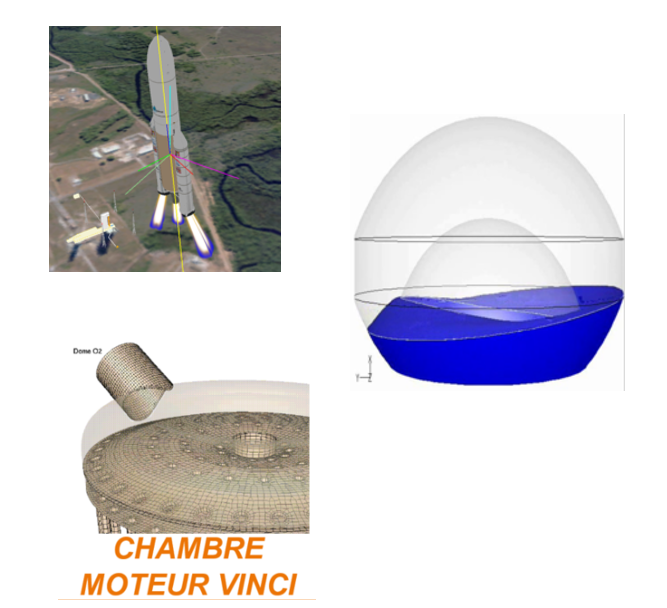
CNES typical use cases (2)
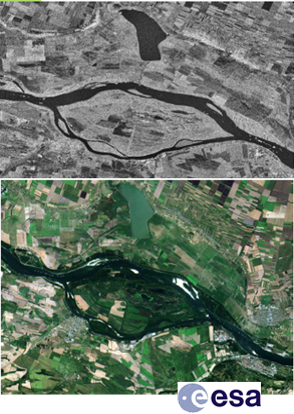
Data production and diffusion
- Continuous data production (L0 –> L2)
- Data portals, catalogs
- Processing or reprocessing campains
- Technical Domain: HTC
- CNES Projects: SWOT, THEIA, SWH, SSALTO, PEPS
CNES typical use cases (3)
Data analysis, dowstream research
- Scientific studies on data prodcuts
- Multi temporal or cross domain analysis
- EO or astronomical Data
- Technical Domain: HTC, Big Data, AI
- CNES labs or projects : CESBIO, LEGOS, AI4Geo, EOLab
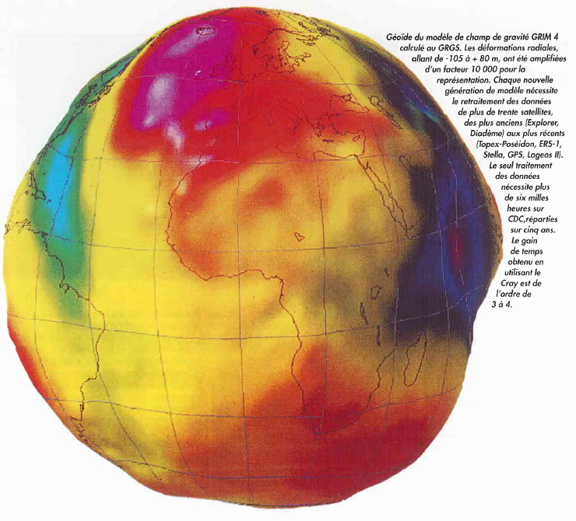
Architecture, big picture

Several things: Login nodes, Admin/Scheduler nodes, Compute resources, Parallel FS, RMDA Network
Job scheduler
- Job Queuing System
- Job = Resources, Walltime, Queue, Account, etc.
- Resources management and scheduling
- Priority, fairshare partition, QoS
- SLURM, PBS, SGE, LSF, etc.
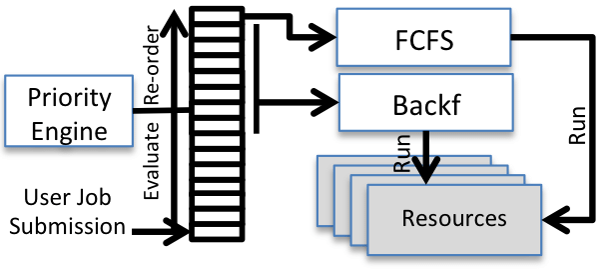
#!/bin/bash
#SBATCH --job-name=serial_job_test # Job name
#SBATCH --ntasks=1 # Run on a single CPU
#SBATCH --mem=1gb # Job memory request
#SBATCH --time=00:05:00 # Time limit hrs:min:sec
#SBATCH --output=serial_test_%j.log # Standard output and error log
module load python
python /data/training/SLURM/plot_template.pyHigh Performance Storage
- POSIX file system
- Usually based on powerfull SAN storage infrastructure
- High performance and capacity: millions IO/s, hundreds GB/s, hundreds PB capacity.
- Spectrum Scale (GPFS) and Lustre
- Other players: WekaIO, BeeGFS
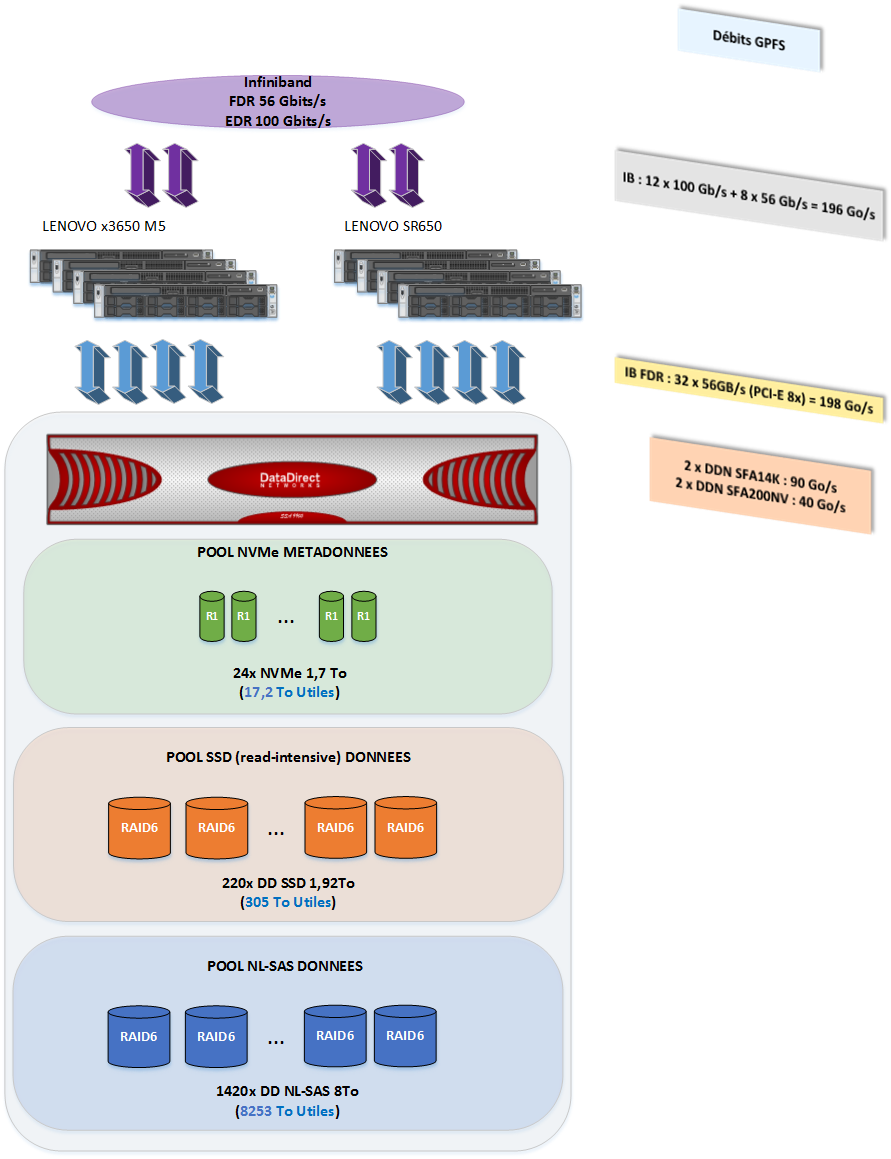
Software technologies
- Classical HPC: C and Fortran
- Compiled languages, hardware optimized
- MPI & OpenMP
- CUDA, OpenACC
- More and More: Python, Julia
- Interpreted Languages, easyer to use
- Lots of performant libraries to reuse (e.g. Numpy, Scipy, Pandas, etc.)
- Parallel and distributed computations:
- Multiprocessing
- MPI4Py : Python over MPI
- Dask, Ray, etc.
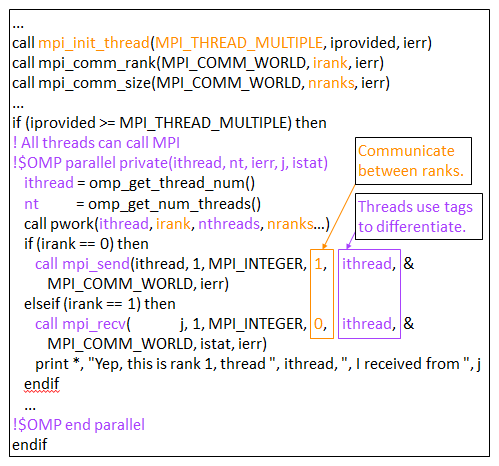
From HPC to Big Data to Cloud and High Performance Data Analytics
HPC platform, story and use case
HPC = High Performance Computing
- Firsts HPC platforms built in the 1960s
- Mainly compute bounds algorithms
- At first for Weather forcasting and Aerodynamic research
- Structure modeling and fluid mecanics by discretization
- Needs (needed?) high performance hardware (network, CPUs, storage)
- Compute and storage are separated
- Uses a resource scheduler

TOP500
| Rank | System | Cores | Rmax (TFlop/s) | Rpeak (PFlop/s) | Power (kW) |
|---|---|---|---|---|---|
| 1 | Frontier - United States | 8,699,904 | 1,194.00 | 1,679.82 | 22,703 |
| 2 | Aurora - United States | 4,742,808 | 585.34 | 1,059.33 | 24,687 |
| 4 | Supercomputer Fugaku - Japan | 7,630,848 | 442.01 | 537.21 | 29,899 |
| 5 | LUMI - Finland | 2,752,704 | 2379.70 | 531.51 | 7,107 |
| 17 | Adastra - France | 319,072 | 46.10 | 61.61 | 921 |
| 167 | Jean Zay - France | 93,960 | 4.48 | 7.35 |
Big Data and Hadoop
- First platforms in the 2000’s
- Mainly data bound algorithms
- Limitation in standard ethernet network performances = data locality
- At first for web indexing, or large amount of textual or tabular data analysis
- Web giant problem, then banking or IT stuf
- Use commodity hardware
- Compute and storage colocated
HPDA convergence
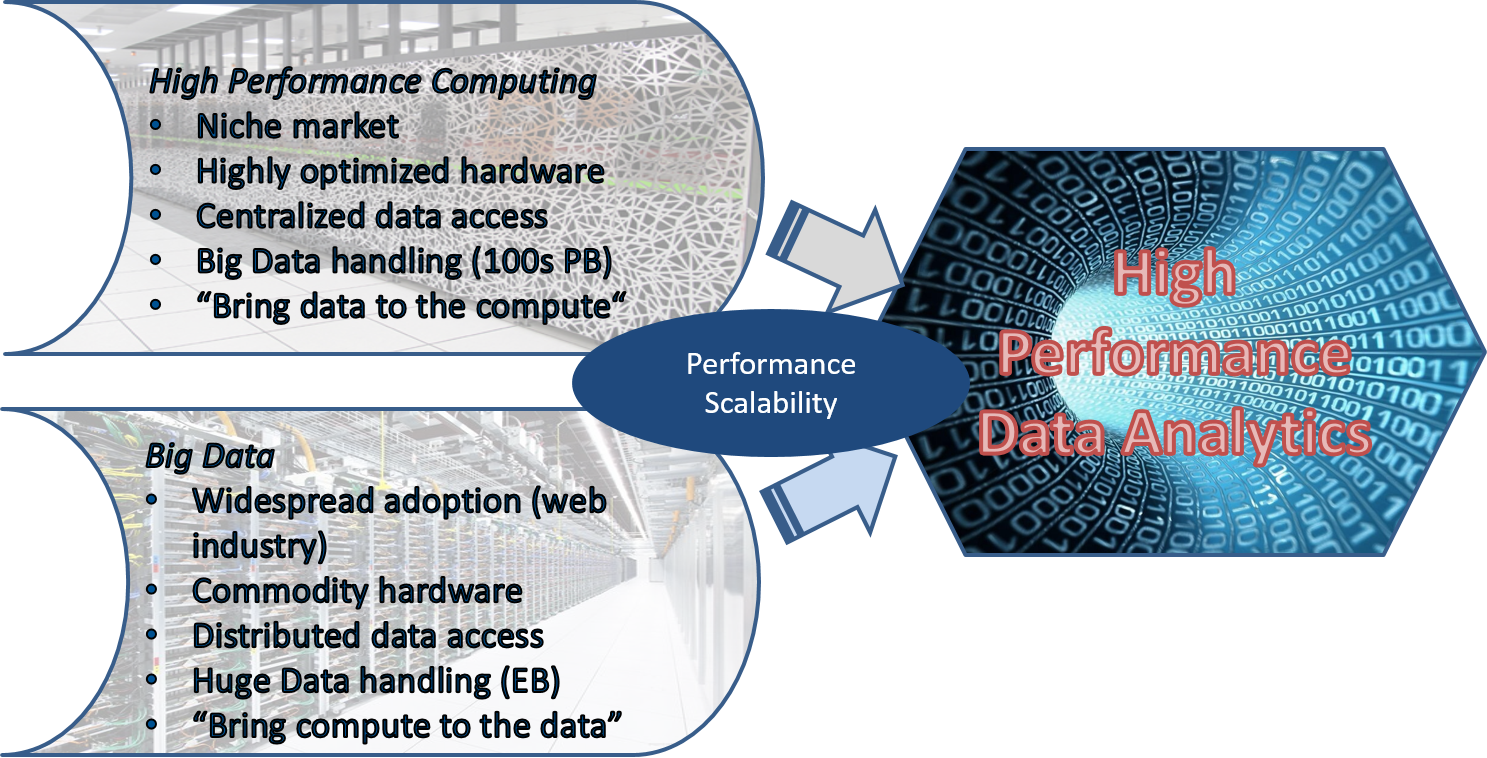
- Hadoop world step towards HPC: YaRN, equivalent to HPC resources scheduler
- HPC step towards Big Data: hardware not so specialized
- Hadoop big limitation: non standard File System and compute and storage colocation
- HPC big limitation: storage can be difficult to scale
Cloud computing basics
Hence the cloud computing model…
- Compute resources separated from storage (but proximity is key)
- Can host anything, at first not compute oriented
- Object store model: Software Defined Storage as HDFS, specific interface (S3)
- Horizontal scalability of compute AND storage
- Resources on demand, mutualized between millions of users
- Infinite resources like for user
Distributed programming: Hadoop vs HPC vs Cloud
Hadoop
- Data bound algorithms
- Statistics
- Big volumes in input
- Often small outputs
- Can be used for computing problems, but not physical simulation
HPC (MPI)
- Compute bound algorithms
- Small or medium amount of inputs,
- Medium or big outputs (big simulations)
- Can be used for data processing too (Dask)
Cloud
- Anything: services, storage bound, compute bound
- Object store limitations for some HPC workflow
- Or not anymore: HPC as a Service
- Big Data as a Service too…
Machine Learning Computations
Machine learning
- Either lots of data in inputs
- Or lots of models to train (hyperparameter search)
- And of course data preprocessing
- Big Data or HPC or Cloud
GPGPU
- Specific hardware (expensive)
- Really efficient for Deep Learning algorithms
- Image processing, Language processing
Quizz
How Big Data processing differs from classical HPC (multiple choices)?
- Answer A: It is compute bound
- Answer B: It is data bound
- Answer C: It uses specialized hardware
- Answer D: It uses commodity hardware
- Answer E: It is fault tolerant
Answer link Key: fw
BI vs Big Data
Business Intelligence
Business intelligence (BI) comprises the strategies and technologies used by enterprises for the data analysis of business information.
BI technologies provide historical, current, and predictive views of business operations.
Wikipedia
Business Intelligence can use Big Data ecosystems, but is more commonly considered something different.
https://medium.com/doctolib/data-engineers-are-no-longer-data-folks-d10d44712580 https://alphalyr.fr/blog/difference-bi-business-intelligence-big-data/
Classical BI key points
- Build data systems from Business questions
- KPI and business decisions oriented
- Data warehouse, mainframe = Big server with closed technology
- Use structured data, like SQL databases,
- Oriented towards Data Value
Big Data key points
- Find insights from the data systems,
- KPI and business of course, but many more use cases
- Distributed architecture, lot of Open Source
- Different toolset (Hadoop, Python),
- Every data flavor, keep anything!
- Data Volume, Variety, Velocity
Hadoop and Big Data legacy
Is Hadoop dead?
Not quite yet. Still used in many places
It grew up with web giants, producing a really rich and open source ecosystem
But clearly the two main components (HDFS and MapReduce) are now deprecated
And have paved the way to better alternatives
Future of Big Data
Infrastructure: Private or public cloud, and HPC(DA) in some cases.
HDFS? Object Storage!
MapReduce? Spark, Dask.
Chunked file format (SequenceFile)? Parquet, Zarr, Cloud optimized Geotiff.
YaRN? HPC job scheduler, or Kubernetes
Cloud Computing
Quizz
What technologies are replacing Hadoop ecosystem (multiple choices)?
- Answer A: Map Reduce
- Answer B: MPI (Message Passing Interface)
- Answer C: Spark
- Answer D: Cloud computing and object storage
Answer link Key: qt

